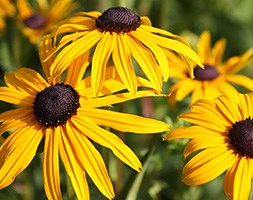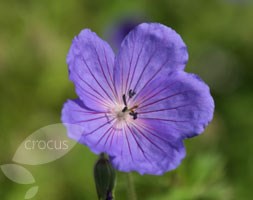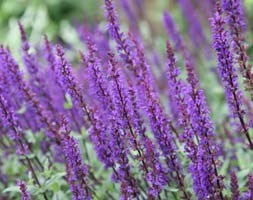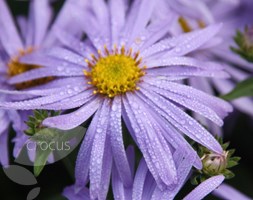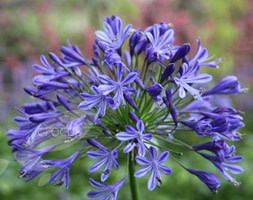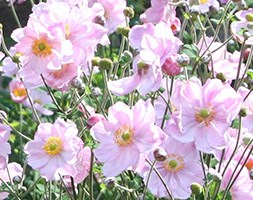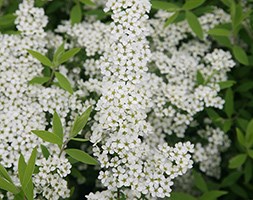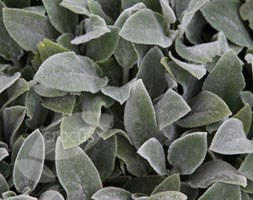Price reductions at Crocus
by Sarah - September 16th, 2014.Filed under: Crocus, Price Reductions.
Crocus reduced the price on these items today
Achillea millefolium ‘Red Velvet’ (yarrow) was £7.99 now £6.99
Position: full sun Soil: moist, well-drained, non acidic Rate of Growth: fast-growing Flowering period: May to August Hardiness: fully hardy The flattened, rosy-red flowerheads are held on upright stems above the aromatic fern-like foliage throughout summer. This cultivar is said to have a good resistance to colour fade. Best in full sun in the middle rank of the border. Achilleas will attract many beneficial insects including bees, butterflies and hoverflies to the garden. Garden care: Protect from slugs. Stake using twiggy stems before the flowers appear. Cut back after first flowering to encourage secondary flush in late summer/early autumn. Old clumps can be revived by liftin g, splitting and replanting in spring.
Rudbeckia fulgida var. sullivantii ‘Goldsturm’ (black-eyed susan) was £7.99 now £6.99
Position: full sun Soil: moderately fertile, preferably heavy but well-drained soil Rate of growth: average Flowering period: August to October Flower colour: golden yellow Other features: toothed, mid-green leaves; excellent, long lasting cut-flowers Hardiness: fully hardy Large, golden-yellow, daisy-like flowers up to 12cm (5in) across with cone-shaped, blackish-brown centres from August to October. This award-winning black-eyed Susan looks great planted in bold drifts with other late summer-flowering perennials and ornamental grasses. Coping well in a sunny spot, it’s ideal for the middle of a border that doesn’t dry out over summer. Garden care: Lift and divide congested colonies in autumn or spring. Support with ring stakes or brushwood well before the flowers appear.
Geranium ‘Brookside’ (cranesbill) was £7.99 now £6.99
Position: full sun or partial shade Soil: fertile, well-drained Rate of Growth: average Flowering period: June to September Hardiness: fully hardy Large deep blue, saucer-shaped flowers with distinctive white centres from June to September among deeply divided mid-green leaves. This lovely cranesbill is a comparatively recent introduction, valued for its intense blue blooms and long-flowering season. It’s excellent for suppressing weeds at the front of a mixed or herbaceous border or as part of a blue colour-themed scheme . Garden care: In midsummer rejuvenate plants that are beginning to look jaded, by removing old flowered stems and leaves. Lift and divide large colonies in spring.
Salvia nemorosa ‘Caradonna’ (sage) was £7.99 now £6.99
Position: full sun Soil: light, moderately fertile, humus-rich, moist but well- drained soil Rate of growth: average Flowering period: June to October Flower colour: violet-blue Other features: attractive to butterflies and bees Hardiness: fully hardy A superb cultivar with glowing purple stems loaded with violet-blue flowers from June to October. The grey-green, aromatic foliage also makes an attractive accent in the summer border. A compact variety that is perfect for adding a splash of colour at the front of a well- drained herbaceous border or gravel garden. It thrives in a sunny spot and will become drought tolerant once established. The blooms are a magnet for butterflies and bees. Garden care: To prolong flowering remove the flower spikes as soon they start to fade. Apply a generous 5-7cm (2-3in) mulch of well-rotted garden compost or manure around the base of the plant in spring.
Aster x frikartii ‘Monch’ (michalmas daisy) was £7.99 now £7.49
Position: full sun Soil: well-drained, moderately fertile soil Rate of growth: average Flowering period: August to September Hardiness: fully hardy Masses of long lasting, lavender-blue, daisy-like flowers with orange centres from August to September and dark green leaves. These charming Michaelmas daisies are ideal for a mixed or herbaceous border with well-drained, moderately fertile soil. Best in full sun, they associate especially well with late summer flowering perennials such as Rudbeckia and Echinacea. Garden care: Stake with bamboo canes or brushwood in early spring. Water regularly during dry spells and deadhead regularly to prolong flowering. After flowering cut the flowered stems to the ground and apply a generous mulch of well-rotted garden compost or horse manure around the base of the plant. Asters are one of the easiest plants to take cuttings from. All you need to do is pull away sideshoots that have already rooted. These can then be potted up individually or planted directly in to the garden.
Agapanthus Headbourne hybrids (African lily) was £9.99 now £7.99
Position: full sun Soil: fertile, moist, well-drained soil (or John Innes no. 3 compost for containers) Rate of growth: average Flowering period: July to September Hardiness: borderline hardy (may need protection in winter) Showy globes of trumpet-shaped flowers ranging in colour from deep to pale blue, appear from July to September on straight stems above clumps of strap-shaped, mid-green leaves. Headbourne Hybrids are a particularly fine variety of African lilies, ideal for a sunny well-drained border or a large patio pot. Garden care: Keep well-watered during the growing season, applying a balanced liquid fertiliser Towards the end of September ease back on the watering and feeding of plants in containers to allow the foliage to toughen up. each month from spring until the plant flowers. In cold, exposed areas protect the crown of the plant with a deep, dry winter mulch.
Anemone x hybrida ‘Konigin Charlotte’ (Japanese anemone ( syn. Queen Charlotte )) was £8.99 now £7.99
Position: full sun or partial shade Soil: moist, fertile, humus-rich soil Rate of growth: fast-growing Flowering period: August to October Hardiness: fully hardy A fabulous plant for bringing colour to the garden in late summer and autumn, this anemone has masses of large, pink, cup shaped flowers on tall, wiry stems from August to October. The leaves are pretty, too – vine-like, dark green, and semi-evergreen. These award-winning, semi-double, Japanese anemones are perfect for areas of partial shade towards the back of a moist herbaceous or mixed border. One of our recommended plants, if left undisturbed they will soon spread to form majestic clumps. Garden care: Cut back the stalks after the flowers have faded. Tidy up old dead leaves in March. Apply a generous 5-7cm (2-3in) mulch of well-rotted garden compost or manure around the base of the plant in spring. Avoid moving the plant since it resents disturbance. Where necessary lift and divide congested clumps in early spring.
Spiraea ‘Arguta’ (bridal wreath) was £8.99 now £7.99
Position: full sun Soil: fertile, moist, well-drained soil Rate of Growth: average to fast Flowering period: April and May Flowers: white Other features: toothed, bright green leaves Hardiness: fully hardy Gorgeous arching sprays of white flowers in mid and late spring and toothed, bright green leaves. This popular, deciduous shrub is ideal for a sunny, well-drained shrub or mixed border. Relatively vigorous and easy to grow, to guarantee an abundant, foam-like display it must be pruned annually immediately after flowering. Garden care: Immediately after flowering prune flowered shoots to strong buds. On mature specimens cut back between a quarter to a fifth of the old shoots to the base.
Stachys byzantina ‘Silver Carpet’ (lamb’s ears) was £8.99 now £7.99
Position: full sun Soil: well-drained, moderately fertile soil Rate of Growth: average Other features: silvery white leaves Hardiness: fully hardy Rosettes of silver, greyish white leaves provide an attractive, weed suppressing carpet for much of the year. This variety of ‘Lamb’s Ears’ rarely flowers and is an excellent, drought-tolerant groundcover or edging plant for a well-drained site in full sun. The foliage is a more intense shade of silver than flowering varieties of the plant. Garden care: Pick off and destroy any foliage that becomes infected by powdery mildew and treat the remaining leaves with fungicide. Lift and divide large clumps in early spring.








